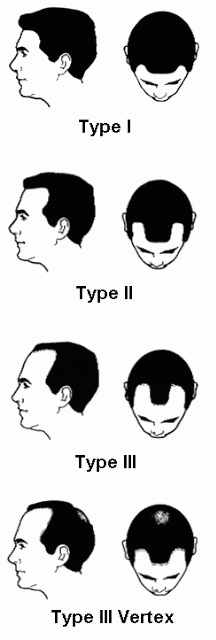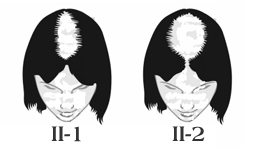Scalp...
Scalp Micropigmentation (SMP)...

Medical Scalp Tattooing or Scalp Micropigmentation (SMP) is a cosmetic medical grade tattoo that reduces the contrast between the colour of the scalp and the colour of the hair so that the scalp can not be easily seen through the hair.
It is a new and creative technique that offers an alternative to hair transplant surgery.
This is done by precisely implanting thousands of very small dots/hairs in the scalp using very fine needles. This is very effective in:
-
disguising thinning hair
-
balding - in a shaved scalp replicating very short hairs
-
camouflaging scalp scarring, caused by previous surgeries, injuries or skin diseases.
SMP is a process that will require multiple appointment sessions to reach the desired result. Generally this is achieved within 2 – 4 sessions, however the amount required is entirely dependent upon the size and location of the area to be treated and the requirements of the client.
The first appointment will consist of the initial consultation. The following appointments will be sessions of the actual treatment procedure. The FULL treatment requires multiple treatment sessions in order to carefully layer the pigments into the skin so as to achieve maximum density, retention of colour and shape.
Treatment durations vary depending upon how advanced or detailed the required results are. The priority is to achieve the best possible result and to do this it is necessary to allow sufficient time to complete the procedure. Please allow up to 4 – 6 hours for your first scalp micro-pigmentation treatment appointment.
Treatment sessions are spaced 10 – 14 days apart.
Full treatment price will be quoted at the initial consultation... This price will include 3 treatment sessions. Any further treatment sessions will be charged individually, per session.
How hairloss is measured...
...in men
The Hamilton-Norwood scale is the generally accepted standard when describing and measuring the extent of male hair loss. Men typically lose hair in several patterns. The most common are receding at the temples, on the top and back of the head and general thinning where hair over large areas begins to thin, without a specific change to the hairline. This hair loss classification system is often used as a common reference point against which to gauge available treatment options. Normally, the further along a patient is on the Norwood scale, the fewer effective hair loss treatments are available to them and the effectiveness of certain treatments becomes limited.


Type I
Normal head of hair with no visible hair loss.
Type II (2)
Demonstrates the progression to an adult hairline. Hair loss at this stage is very mild and usually concentrated at the frontal hairline. This also does not represent balding.
Type III (3)
Is the earliest stage of male hair loss considered significant enough to be called ‘baldness’ according to this scale. Same receding pattern as Type 2, except the hairline has receded deeper into the frontal area and the temporal area, which are either bare or only sparsely covered with hair.
Type III (3) (vertex or crown)
The vertex figure here shows the additional thinning of the hair at the crown of the head.
Type IV (4)
Includes a deep recession at the front of the head in the temple areas. Hair loss at the crown is evident and often a band of moderately dense hair will separate hair loss at the front of the scalp from that at the crown of the head. The sides of the head are still well covered with hair.
Type V (5)
This stage marks the beginning of severe hair loss. While there is a small separation between the loss of hair at the hairline and the loss of hair at the crown, the band of hair between the two is much thinner and narrower. Hair loss at both the crown and temple areas are larger and more distinct.
Type VI (6)
The bridge of hair that once separated the front of the head from the crown is now almost fully lost, only a few sparse strands may persist. The remaining hair now forms a horseshoe shape around the baldness concentrated in the center of the scalp. Hair loss on the sides of the head will also extend further at this stage.
Type VII (7)
This is the most advanced stage of hair loss where only a wreath of thin hair remains on the sides and back of the scalp.
...in women
Baldness in women takes a different pattern, and is generally classified on the Ludwig scale, which ranges from stages I to III. Stage I begins with thinning on the top of the head. In stage II the scalp starts to show. Finally, all of the hair at the crown of the head may be lost when the hair loss progresses to stage III. However, the scale is used merely for general categorization. Many women do not actually fit into the Ludwig stages.



Type I (1)
In this stage, hair loss is considered to be mild. Hair loss may occur on the top and front of the scalp. Such hair loss may be noticeable when the hair is parted down the center of the scalp, as more and more scalp will become visible over time.
Type II (2)
This type of hair loss is considered moderate. In this stage, women may notice each of the following: Thinning, shedding, general decrease in volume, and a center part that continues to widen over time.
Type III (3)
This is the most extreme classification of female hair loss. In this stage, hair is so thin that it has difficulty camouflaging the scalp, rendering it visible to the naked eye.
SMP Aftercare:
Will look dark in colour at first and may show signs of swelling and/or redness in first 3 days. Please be aware that the skin is broken after scalp tattooing and must be treated with sterility.
-
KEEP DRY! Avoid water touching the area for the first 7 days. NO shower gel, shampoo or hair products on the scalp (2 weeks);
-
DO NOT wear any hats or headware that could cause perspiration until healed;
-
DO NOT rub, pick or scratch treated area - Allow scabbing to fall off naturally.
-
Avoid direct sun exposure on the area for 2 weeks;
-
DO use a waterproof sunblock (SPF 50) on the treated area after 2 weeks when going out in the sun to prevent colour fading;
Please book your 2nd necessary procedure for 10-14 days later.
DO NOT PICK OR SCRATCH any of the above procedures, as this can cause pigment loss resulting in an uneven finish and you will risk both scarring and infection!

